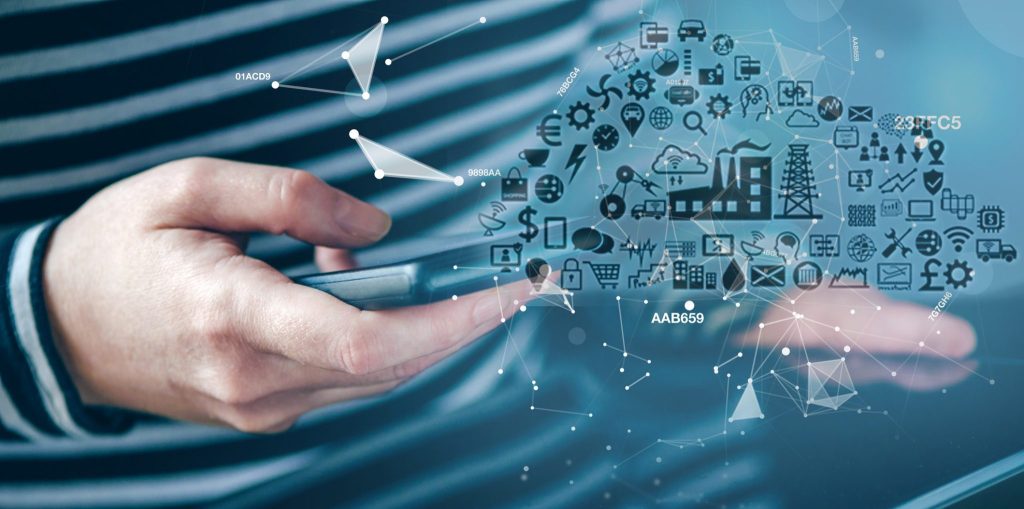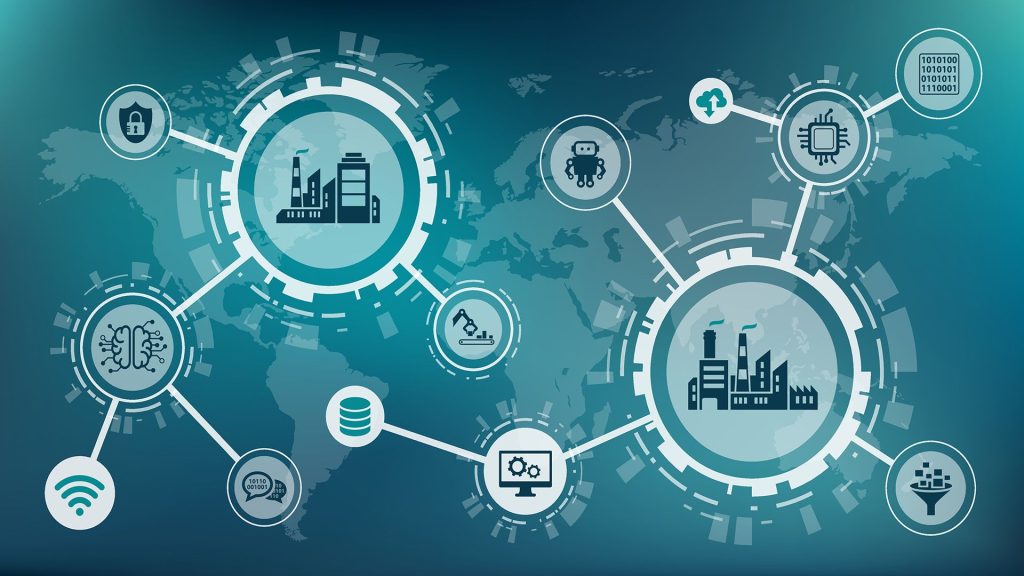Difference Between IoT and IIoT
These disruptive technologies are enabling organizations to remotely access factory, production, and industrial equipment data directly. No technology has been more disruptive in recent years than the Internet of Things (IoT). IoT refers to a network of intelligently created physical objects with electronics, sensors, software, and networking that enable these objects to collect and exchange data.
Now, IIoT, which stands for Industrial Internet of Things, is a similar concept. Both have the common feature of smart, connected devices. The difference between IoT and IIoT is how they are used. While consumers or end-users typically use IoT, IIoT is used for industrial purposes such as manufacturing, monitoring, and supply chain management.
If we compare the two, it is clear that IIoT uses more sophisticated devices to make good use of existing production and supply chain monitoring. On the other hand, the main purpose of IoT is to use smart devices to help improve the lives of consumers. This article explores the difference between IoT and IIoT.
Table of Contents
What is IoT (Internet of Things)?
The collection of real-world items, or “elements,” that are integrated with software, detectors, and connections for collecting and sharing information with other devices and networks through the Internet is known as the Internet of Things (IoT). These “devices” can collect data and transmit information through the internet or different networks. These may include everyday products, machinery, electronics, automobiles, or perhaps a living person.

IoT’s main goal is to make it possible for these devices to communicate with one another, using centrally controlled systems, as well as with cloud-based services, enabling examining the information, analyzing, and management. Many advantages result from communication and data exchange, including increased effectiveness, improved accessibility, immediate feedback, and opportunities for automated decisions without apparent personal involvement.
What is the Industrial Internet of Things (IIoT)?

The growth of the Internet of Things (IoT) for commercial and business uses is referred to as the Industrial Internet of Things (IIoT), sometimes known as Industrial IoT. The Industrial Internet of Things (IIoT) involves the implementation of interconnected equipment and intelligent systems to increase productivity, maximize industrial operations, and alter a variety of industries, like production, distribution, services, the agricultural sector, and healthcare.
The Industrial Internet of Things is a part of or can be said to be a subset of the Internet of Things, i.e., IIoT under IoT, mainly focused on industrial applications. Smart devices play an important role in the IIoT, helping to communicate important information in a better way and analyze and capture data in real time. Using IIoT, business decisions can be made more quickly and accurately. IIoT also helps companies grow by helping them understand business processes in a better way and making them more efficient.
Similarity between IoT and IIoT

Connectivity: Connectivity is a key component of both IoT and IIoT. To communicate data, they connect to sensors, gadgets, and machinery that could link to the internet or different networks.
Collection of data: IoT and IIoT both gather information from the real world. In both models, sensors and gadgets collect data about their environment, including weather conditions, humidity, position, and more.
Data Analysis: IoT and IIoT both use data analysis to gain knowledge and generate smart choices. For obtaining useful information, processing data using devices, including sensors, is frequently done in real-time.
Remote Control and Monitoring: Both IoT and IIoT structures allow for the remote monitoring and management of technologies and linked devices. Using the internet or mobile apps, users can use their digital devices from away from home.
Automation: Both IoT and IIoT can automate operations and procedures in response to specified guidelines or dependent on information conditions. An IIoT device used for production could start servicing operations if machinery data suggests an ongoing problem, when a smart heating system in a house (IoT) may modify the climate depending on the needs of the consumer.
Increased Productivity: Although they are used in various situations, IoT and IIoT both work to increase productivity. IoT improves control of resources and simplicity in user applications, while IIoT improves operations in businesses, producing higher productivity and lower operating costs.
Data Security and Privacy Concerns: IoT and IIoT both have privacy and security issues. High levels of security are required because of the connectivity of devices and the information they produce, which can lead to danger and privacy problems.
Scalability: Both IoT and IIoT concepts are flexible to support a range of device counts and data quantities. They were developed to deal with increasing quantities of linked products as well as data providers over some time.
Integration: Integration with current technology and structures is frequently necessary for IoT and IIoT. To succeed in their goals, they must operate in perfect balance with various other machines, software, and programs.
Interoperability: Making sure that machines and networks can effectively connect plays an important role in both IoT and IIoT. To achieve that, communication guidelines and processes can be needed.
Difference between IoT and IIoT

Let’s discuss the Topic of IoT vs IIoT
1. Focus and Application:
IoT (Internet of Things): IoT applications that are currently targeted at consumers will be its main priority. To increase ease of use, effectiveness, and customer satisfaction across a variety of sectors, including smart houses, wearables, and household devices, it requires linking common items and equipment with the internet.
IIoT (Industrial Internet of Things): The Industrial Internet of Things, on the other hand, is designed for business-to-business (B2B) operations. In industries including production, distribution, services, and healthcare, it is implemented to increase productivity, provide security and quality, and increase business operations.
2. Data Usage:
IoT: Data is frequently utilized in IoT to improve individual perspectives and activities. Measures related to a person’s health, interests, and activity are all examples of data that IoT devices could be collecting.
IIoT: IIoT mainly collects information about machine operation, business procedures, as well as security functions. The IIoT analyzes data to improve production methods and maintain the quality of products.
3. Scalability and Complexity:
IoT: IoT technologies are frequently easier to use and built for wide usage. They are often easier to configure and handle even though they may be implemented on huge scales.
IIoT: To satisfy the requirements of industry situations, IIoT solutions are frequently more advanced and flexible. They might need complicated structures of sensors, machines, and technology, which would make them challenging to set up.
4. Industry Specificity:
IoT: Healthcare, automobiles, supermarkets, and smart houses are just a few of the consumer areas where IoT offers benefits. It satisfies a range of customer requirements and expectations.
IIoT: Industrial sectors, including manufacturing, logistics, utilities, agriculture, and healthcare, are specifically impacted by IIoT. Its main priorities are improving industrial processes and assuring quality and safety.
5. Use Cases:
IoT: IoT use cases include smart home automation, wearable fitness trackers, connected vehicles, and consumer electronics. It enhances convenience and everyday life.
IIoT: IIoT use cases involve predictive maintenance in manufacturing, real-time asset tracking in logistics, smart grids in utilities, and healthcare equipment monitoring. It focuses on improving industrial operations and safety.
6. Security Considerations:
IoT: Security concerns in IoT typically revolve around device weakness, data privacy, and a lack of standardization in security practices.
IIoT: IIoT security concerns include operational disruption, safety risks, and the complexity of securing critical industrial systems.
Summary
In summary, both IoT vs IIoT depend on connections and information to power creative thinking, but they serve different industries with specific needs. While IIoT affects enterprises by boosting productivity, security, and performance, IoT enhances everyday life by linking regular devices. For companies and people hoping to make use of the Internet of Things capabilities in their various fields, whether for consumer simplicity or industrial growth, recognizing the difference between IoT and IIoT is important.

